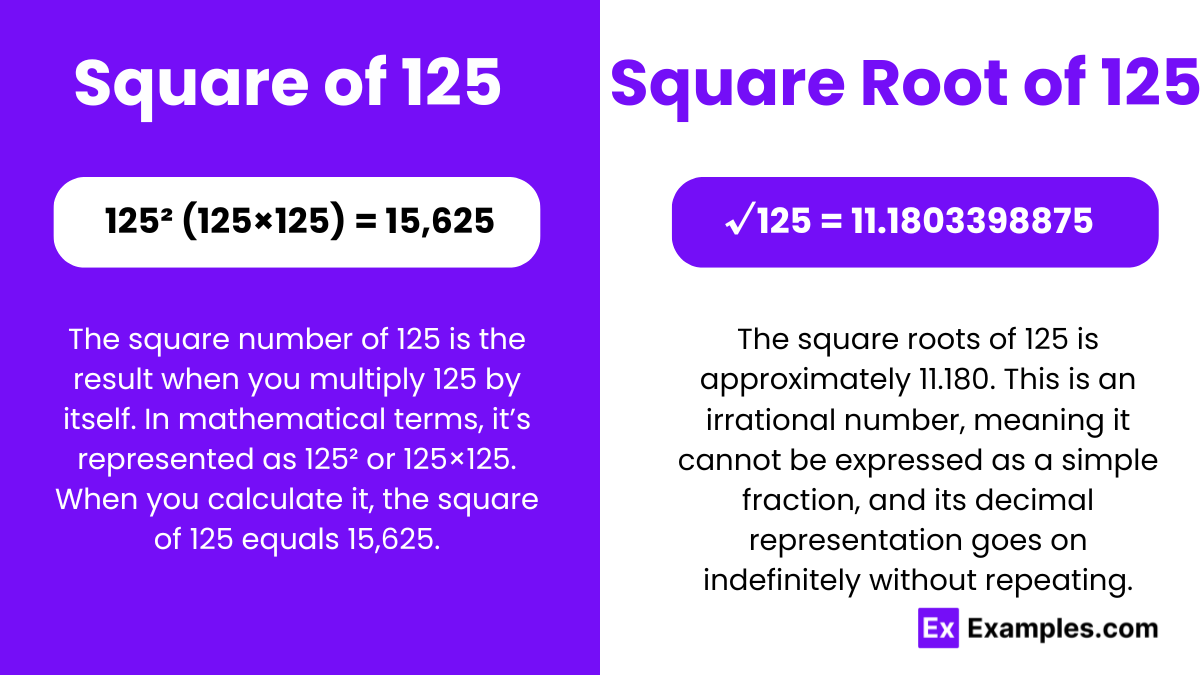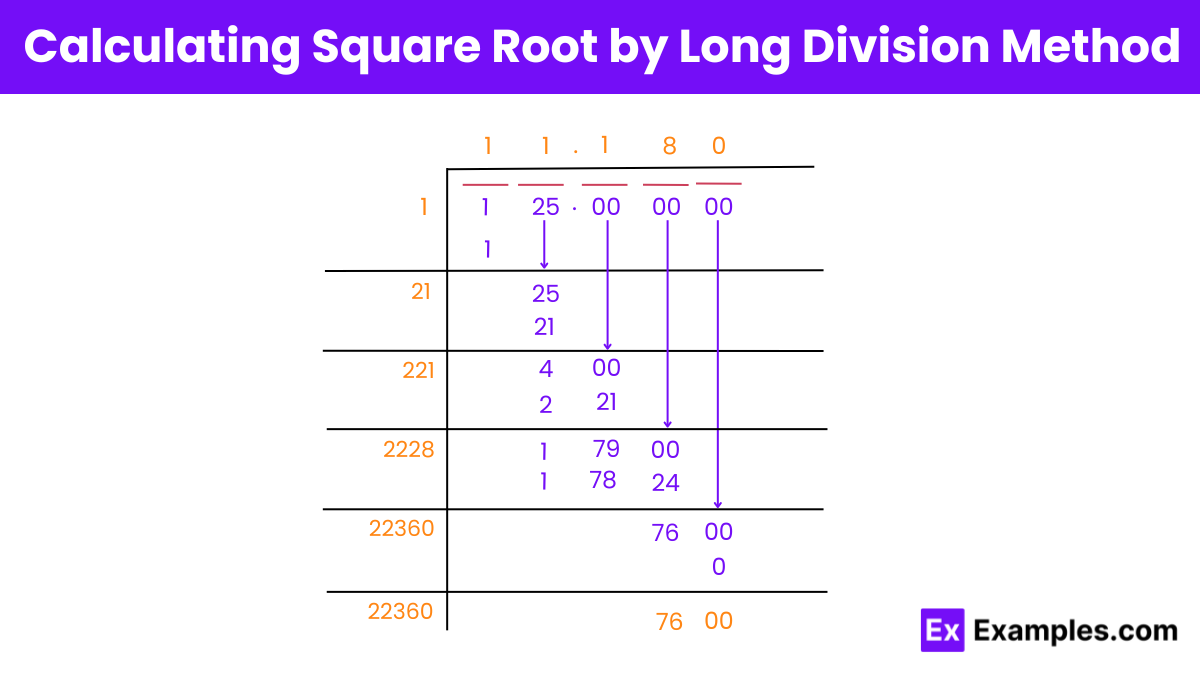What is the square root of 125?
10
11
12
13

The square number of 125 is the result when you multiply 125 by itself. In mathematical terms, it’s represented as 125² or 125×125. When you calculate it, the square of 125 equals 15,625.
√125 = 11.1803398875
Or
√125 = 11.180 up to three places of decimal
The square root of 125 is approximately 11.180. This is an irrational number, meaning it cannot be expressed as a simple fraction, and its decimal representation goes on indefinitely without repeating.
Square Root of 125: 11.1803398875
Exponential Form: 125^½ or 125^0.5
Radical Form: √125
To understand why, let’s break it down:
An irrational number is a number that cannot be expressed as a simple fraction (i.e., the ratio of two integers) and whose decimal representation goes on infinitely without repeating. When we try to find the square root of 125, we find that it doesn’t simplify to a whole number or a fraction. The approximate value of the square root of 125 is around 11.1803. This decimal goes on infinitely without repeating any pattern.
Therefore, because the square root of 125 cannot be expressed as a fraction and its decimal representation is non-repeating and non-terminating, it is considered an irrational number.
Rational numbers are numbers that can be expressed as a fraction, where both the numerator and the denominator are integers, and the denominator is not zero.
Examples: 3/4,5/1
Irrational numbers are numbers that cannot be expressed as a simple fraction, with decimal expansions that are non-terminating and non-repeating. These numbers often arise in geometry and algebra, especially involving roots of numbers that are not perfect squares or certain ratios like the circumference to the diameter of a circle (π).
Examples: √22 and π.
Estimation:
You can start by identifying perfect squares that are close to 125, such as 121 (11² ) and 144 (12²).
Estimate that the square root of 125 is slightly more than 11, as 125 is slightly more than 121.
Long Division Method:
This traditional method involves a step-by-step procedure similar to long division. It helps find more precise values of square roots manually.
Calculator:
The simplest and most accurate way to find the square root of any number is using a calculator. Simply entering “√125” will give the precise value quickly.
Newton’s Method (or Newton-Raphson Method):
This is an iterative numerical method used for finding approximations to the roots (or zeroes) of a real-valued function. For √125 , the function would be f(x)=x²−125.
Start with an initial guess, say x₀=11, and iterate using the formula:
xₙ₊₁ =xₙ − xₙ² − 125/2xₙ
f(x)x² − 125 and its derivative f′(x)=2x.

No, A perfect square is a number that can be expressed as the square of an integer. The closest perfect squares to 125 are 121 (11²) and 144 (12²), and since there’s no integer whose square equals 125, it is not a perfect square.
In Vedic Mathematics, squaring numbers close to base values like 10, 100, etc., can be done quite efficiently. Here’s a simpler breakdown for squaring 125 using Vedic math techniques:
The cube root of 125 is 5. This means that 5×5×5=125. The number 125 is a perfect cube because it can be expressed as the cube of an integer.
Text prompt
Add Tone
10 Examples of Public speaking
20 Examples of Gas lighting
What is the square root of 125?
10
11
12
13
What is the square of 11?
121
122
123
124
What is the approximate value of √125?
10
11
12
13
If the side length of a square is 125 units, what is the area of the square?
125
250
15625
156
What is √125 in simplest radical form?
5√2
5√3
5√5
5√7
What is the square of √125?
125
150
250
300
If you multiply √125 by itself, what is the result?
100
125
150
200
What is the next perfect square greater than 125?
144
121
100
169
What is the difference between 144 and 125?
16
17
18
19
What is the approximate value of √125 rounded to the nearest integer?
10
11
13
12
Before you leave, take our quick quiz to enhance your learning!

